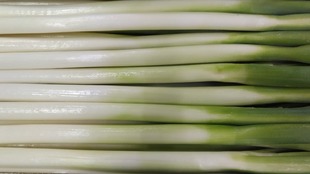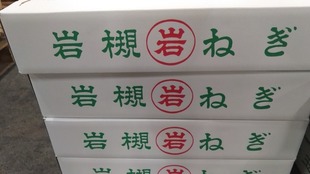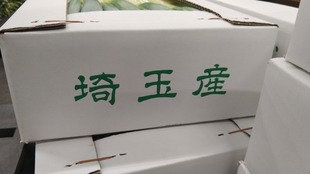幽谷 遷于喬木(Yukoku (secluded valley): A deep valley, a low place, a low position, etc. Kyoboku (tall tree): A tall tree, a high position, etc. Utsuru (moving): To move, to change, to be promoted, etc.): It is used to express or describe the state of wishing to move from a low to a high position, or from a difficult situation to a favorable one. Specifically, it expresses the desire to reach a high position through learning, just as an aspiring scholar leaps from a deep valley to a tall tree. It also represents the image of people seeking companions and growing together through friendly competition. It expresses the desire to be promoted from a low position to a high one. Iwatsuki domain Senkyokan was a private school opened in 1799 by Nanka KODAMA(His grandfather's sister was the perpetrator of the Ejima Ikushima Incident, a famous disciplinary case that occurred in the mid-Edo period when Ejima, a member of the high-ranking female servant in the O-oku (courtesy lady of the inner palace) of Edo Castle, entertained the kabuki actor Shingoro lkushima and others, resulting in the punishment of 1,400 people involved.), a Confucian scholar who served the Iwatsuki domain. It later became a domain school, where the children of Iwatsuki domain samurai studied and practiced martial arts. After the domain school was abolished in 1871, the building was mostly used as a private residence, but in 1939 it was designated a historic site by Saitama Prefecture. It was dismantled, repaired, and restored between 2003 and 2006, and is now open to the public. It is the only surviving domain school building in Saitama Prefecture.
【Product name】
Iwatsuki green onions
【Type 】
Allium fistulosum
【Production area】
Iwatsuki Ward, Saitama City, Saitama Prefecture
【Origin of the name】
Green Onion with a lot of white parts at the base. Make a groove around it and pull the soil from there to fill the groove. At the end, the green onions are high and buried in the soil, and the opposite of the beginning. It became "Nebuka green onion" because it grows deep roots.
【Main features】
The Saitama High-speed Railway Line, which opened in 2001, is a 14.6 km line connecting Akabane Iwabuchi Station in Kita Ward, Tokyo to Urawa Misono Station in Midori Ward, Saitama City, Saitama Prefecture. From Akabane Iwabuchi Station on the south side, board the Tokyo Metro Nanboku Line, and some trains run to the Tokyu Meguro Line, which connects to the Tokyo Metro Nanboku Line. At the time of 2021, it seems that the Saitama High-speed Railway Line had an extension plan to connect Urawa Misono Station to Hasuda Station in Hasuda City, Saitama Prefecture, via Iwatsuki Station in Iwatsuki Ward, Saitama City in the north. Of these, the section from Urawa Misono Station to Iwatsuki Station has a concrete concept. Subway Line 7 Intermediate Station Town Development Policy The first meeting of the Expert's Meeting was held on July 8, 2022 in Iwatsuki Ward, Saitama City, Saitama Prefecture, and it seems that the committee members exchanged opinions. The city seems to be planning to extend from Urawa Misono Station on the Saitama High-speed Railway to Tobu Iwatsuki Station and to establish an intermediate station near Mejiro University Saitama Iwatsuki Campus (Ukiya, Iwatsuki Ward). By November of this year, a total of four meetings will be held to gather opinions, public comments will be made, and a town development policy will be formulated by the end of this year. Cultivation of Iwatsuki green onions began before the Edo period, and it seems that they were popular in a wide area in the Kanto region. classic rakugo stories Tarachine (垂乳根: a story that was ported to Tokyo as Tarachine from the story that was played as "Enyohaku" in Kamigata Rakugo. In the Edo period, the idea that girls did not need education was deep-rooted, but a good wife. It seems that there were many parents who learned reading and writing, polite manners, and dance to become wise mothers. After learning a lot of culture, it seems that it was ideal to go out to the samurai and merchants for practical learning. It was a narrow gate to get a job as a mansion servant, and his career seems to have become one of the conditions for a ball. He said that he brought all the cooking, washing, sewing work, and even a wedding tool. He was dexterous and couldn't find any bad points. It is said that the other woman has a wound. She is nineteen years old and is the niece of a doctor in the neighborhood. She has more than ten people and has summer and winter kimonos.) Also appeared. In the past, the production area was located in the fertile and well-drained alluvial soil area along the Motoarakawa River. It was cultivated even after the war, but many of the improved varieties of green onions that look good and last for a long time are distributed and gradually disappear. In 2001, in order to inherit the culture of Iwatsuki, we started an initiative aimed at reviving the illusory Iwatsuki Nagao. Currently, it seems that they are aiming to brand and establish Iwatsuki green onions as part of the town revitalization. Iwatsuki green onion is one of the local vegetables in Saitama prefecture. It is a split green onion with several stems extending from one plant, and its leaves are soft and easy to break and very delicate. It is not very resistant to the cold, but it seems that it is possible to put it to sleep during the winter and use it as a year-end green onion. The texture is very soft and the impression is that it has a strong sweetness. It is easy to eat as a condiment and can be used for a wide range of dishes. A character called "Nema-kun", which is based on the image of Iwatsuki green onions, has also been designed and appears in Iwatsuki tourism pamphlets. The green onion introduced this time is a general deep-rooted green onion, but Iwatsuki green onion, which is famous as an original brand, is a kind of leaf onion with many green leaves, and it is slightly shorter than general green onions and the white part is shorter. It has become. The white part is medium-thick, the green leaves are thin and the meat is soft. Although it overlaps, it is said that the fertility is stronger than other green onions because it has the property that multiple stems grow from one strain and the number of stems may increase by 10 or more from one strain. The feature is that it is softer than general green onions. It is soft from the white part to the blue leaf part, and you can enjoy it even if you eat it raw as a condiment by taking advantage of this texture. Like ordinary green onions, it has a spicy taste when raw, but it tends to become sweeter when cooked. Although the meat is tender, it does not easily crumble, making it suitable for hot pot dishes. “Iwatsuki Ward, Saitama City, Saitama Prefecture” : Adjacent to the eastern part of Saitama City. Iwatsuki Plateau in the central and northeastern parts of the city: Besides the Jionji plateau-Formed from the flat land along the Ayase River, the Motoarakawa River that flows from north to south. On relatively flat terrain with little elevation difference. About 5 km east-west and about 15 km north-south, almost oblong. The area is 49.16 km2. It is an area blessed with a natural environment such as rivers, green areas on the plateau edge, and homestead woodland. Iwatsuki place name: 1382 in the early Muromachi period (Eitoku 2): It first appeared as 岩付 in the ancient document Hasegawa-Chikasuke-Chakutojo; 長谷河親資着到状. The current character "Iwatsuki" began to be used in the middle of the Edo period. 槻 is the ancient name of Japanese zelkova(Zelkova serrata (Thunb.) Makino). This handwriting was applied because it was planted everywhere in earthwork(castle)and town. Large rivers such as the Old-Tone River and Motoarakawa River flowed around the area. Until around the Edo period. It was also an important point for land and water transportation, as the main roads leading to the Tohoku region passed through. It was emphasized as a military base, and iwatsuki castle was built in the latter half of the Muromachi period. When Nikko Toshogu shrine was built and shogun visited nikko started, nikko onari road was maintained. It prospered as a post town, a castle town, and the center of the eastern part of Musashi Province. Around this time, toshogu shrine was built and repaired: The beginning of iwatsuki doll was when the mechanics stopped and worked on the doll maker.1871: Haihan-chiken (the feudal domain system was abolished and the prefectural system was introduced.) The clan was abolished and became Iwatsuki prefecture, and along with Urawa prefecture, became Saitama prefecture. Saitama Prefectural office-The prefectural office will be located in Urawa. It was decided to put it in Iwatsuki, but there is no suitable facility. In 1954, Seven Town merged into Iwatsuki City, which continues to this day. Land use: An urban area(Tobu-Noda-Line)with Iwatsuki Station and Higashi-Iwatsuki Station as the core is formed in a belt shape. In urbanization control area(about 80%), mainly use of agricultural land such as fields. In addition, a countryside centered on rice cultivation has been formed. In 1924, the Bushu Railway between Iwatsuki and Hasuda opened. Afterwards, It was extended to Kamine (Kawaguchi City), but due to poor management, it was repeal in 1938. In 1929, the Sobu Railway Omiya-Kasukabe section was opened. Later merged with Tobu Railway and developed as Tobu-Noda Railway. It is connected to central Tokyo via Omiya and Kasukabe. The road is National Route 16 that crosses east and west: The Tohoku Expressway and National Route 122, which run from north to south, run. An area with high transportation convenience such as the Iwatsuki IC at the intersection. There are many agglomerations of factories and distribution-related business establishments. Around the station, we make use of historical resources and the accumulation of doll shops. Creating a unique and attractive commercial environment: Promoted by the Land readjustment project, which aims to create a comfortable living environment. Opening of the west exit of the station and completed in conjunction with urban development integrated maintenance is planned. Southern area adjacent to the eastern Urawa district: As a new urban area, town development based on Saitama Prefecture's international amenity town concept is being developed. Realization of a new north-south traffic axis by extending Subway line 7: Centering on planned land use guidance and Iwatsuki station in areas along the railway line: Expected to create liveliness utilizing sightseeing resources(History and dolls). Shantung cabbage: Selected and trained from Santona greens who came to Japan in the first year of the Meiji era. Cultivation conditions are strict, such as dislike of dusty land, and the yield is low-I hear that it is a phantom vegetable. Although it has been cultivated mainly in Koshigaya and Iwatsuki, its output is decreasing. However, in Saitama, cultivation conditions are in place. “The same vegetables as Kashin-Santosai” used as a raw material for pickles. This product is shipped in the size of Komatsuna(Japanese mustard spinach)because the cultivation period is short. The root part is white and has no habit. It is popular as a vegetable that can be used in various ways such as Miso soup ingredients, a side dish of boiled Shantung cabbage seasoned with soy sauce(and fish stock), and pickles. Cultivated throughout the year in Iwatsuki Ward, Saitama City. If you find one at a retail store, please give it a try. Even in the Meiji era, the Minamisaitama District Office was set up, and it continued to be the political and economic center of eastern Saitama Prefecture, and town development was actively carried out. In 1954, Iwatsuki Town, Kawadori Village, Kashiwazaki Village, Wado Village, Niiwa Village, Jionji Village, and Kawai Village merged to form Iwatsuki City. Then, on April 1, 2005, the merger of Saitama City and Iwatsuki City created "Iwatsuki Ward" as the tenth ward of Saitama City.
The original Iwatsuki long onion is a green spring onion species native to the southern part of Saitama Prefecture. The leaf sheath is medium thick, and the leaf blade is rather thin. In particular, the marketability of the sprout shipment is high, and the trust of consumers is strong and has a good reputation. Originally, it is not very cold tolerant, so it is mainly used as sprouts and summer green onions, but it is dormant in winter, so it is also possible to use year-round green onions. Sowing is mainly done in March and September, and direct sowing is also possible from late May to early June. It is recommended to plant the plants in 70 cm wide ridges with slightly wider spacing between plants. Fertilizer is compost and phosphate fertilizer as base fertilizer, and additional fertilizer is applied about four times. Also, it seems that it is necessary to pay particular attention to dryness when cultivating summer crops.
Iwatsuki green onion is a sweet and soft green onion that grows from one to over a dozen. Appearing in the classic Rakugo stories "Tarachine and Enyohaku", it is a traditional ingredient that has been loved and eaten by the common people since ancient times. However, due to its characteristic softness, the leaves tend to break easily, making it unsuitable for mass display. In the Iwatsuki area, this excellent agricultural product has been produced since the Edo period, mainly along the banks of the Moto-Arakawa River. Green spring onion, which has about 10 stems growing from one stock, is lovely.
Saitama Prefecture's long onion cultivation seems to have become popular since the early Meiji period. Currently, in 2013, the amount of agricultural output is the number one production area in Japan, and it is one of the representative vegetables of Saitama Prefecture. At that time, the national average production per 100 agricultural workers was 18.32 tons, but Saitama Prefecture produced about 89 tons, more than four times the average. In addition, it seems that since before the Edo period, deep-rooted green onions were cultivated in the Kanto region for eating the white part (leaf sheath), while in the Kansai region, soft green spring onions were cultivated that were edible to the tip of the green leaves. It seems that a food culture was established in which people in the Kanto region ate white and people in the Kansai region ate green. In recent years, due to the movement of people and the development of transportation methods, it seems that Japan's unique long onion, which is proud of the east and west, has come to be used according to the cooking purpose.






0 件のコメント:
コメントを投稿